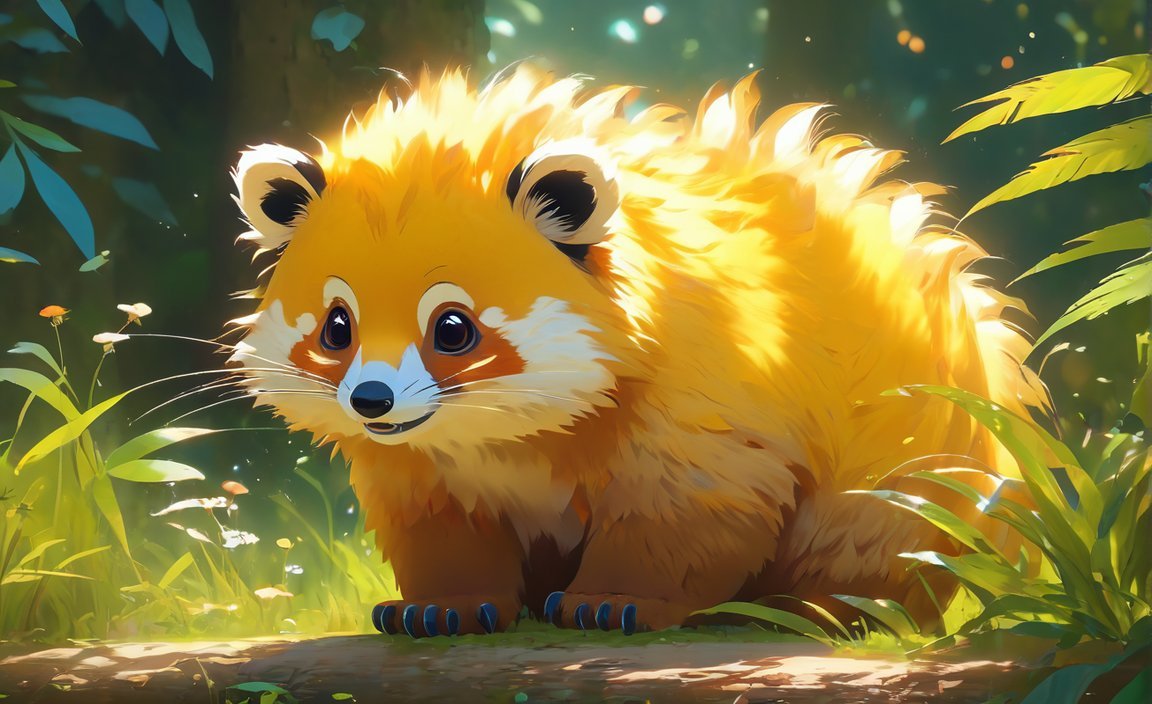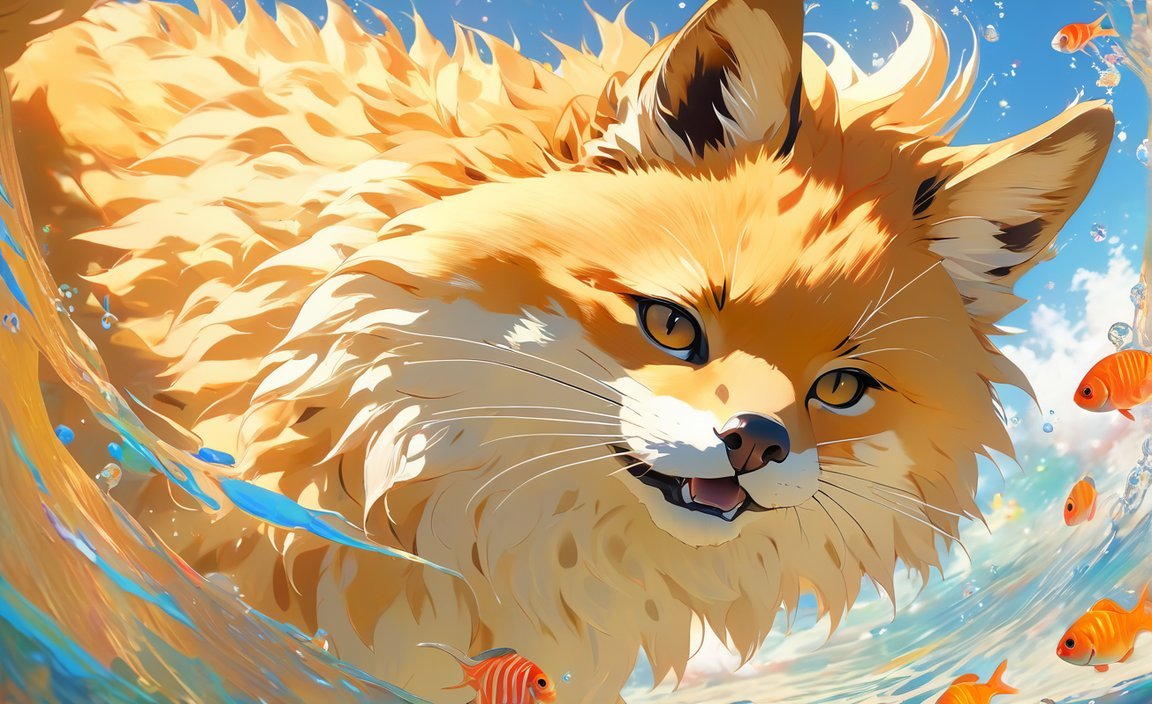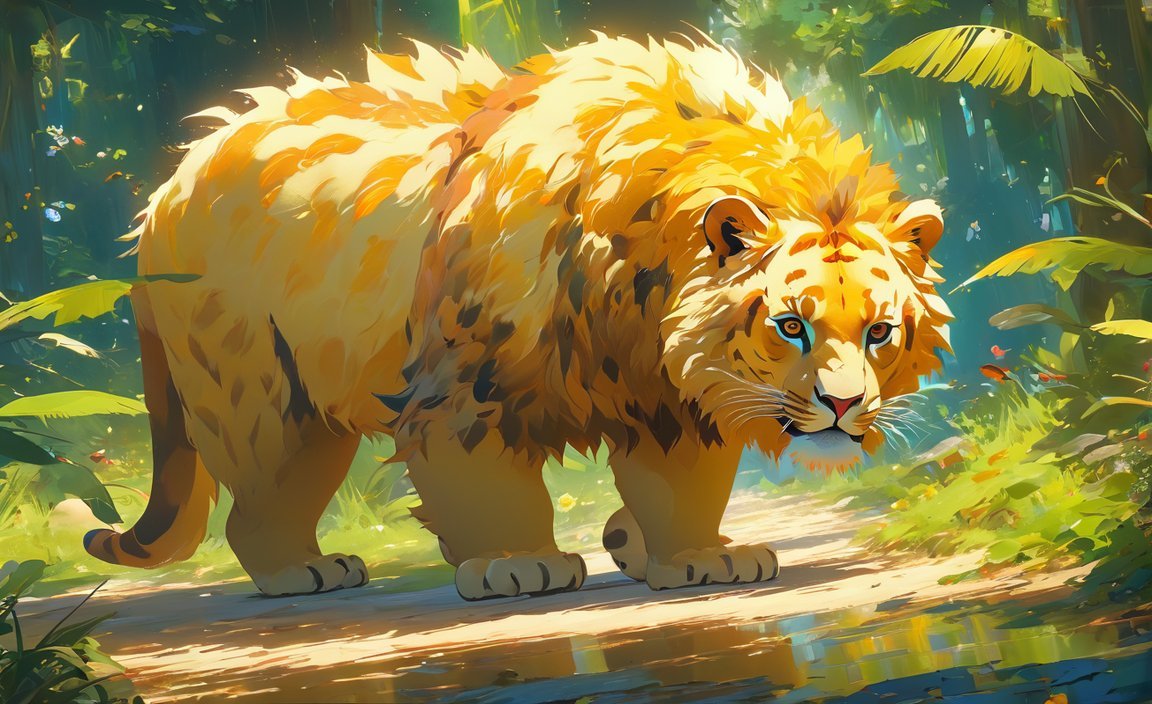Guess what? Animal teeth are super cool! They come in all different kinds, from sharp ones like a lion’s that are made for tearing meat to flat ones like a cow’s that are great for chewing plants. And each type of tooth helps animals live their best lives. Here are 10 fun facts about animal teeth that will make you want to brush your own teeth like a champ!

10 Fun Facts About Animal Teeth
Let’s dive into the fascinating world of animal teeth and uncover some surprising facts that showcase the incredible diversity of nature!
- Humans vs. Dolphins vs. Snails: A Toothy Showdown!
Did you know that the number of teeth an animal has can vary wildly? While we humans have a modest 32 teeth, dolphins can have a whopping 250! But the real champions of chompers are snails, with some species boasting over 20,000 tiny teeth!
- Sharks: The Masters of Tooth Regeneration
Ever lost a tooth and wished it would grow back? Well, sharks have that covered! These incredible creatures have multiple rows of teeth, and if one happens to fall out (which happens quite often), there’s another one ready to take its place. Talk about a dental dream come true!
- Snails: Tiny Teeth, Big Appetite
Snails might seem like they wouldn’t need teeth, but they actually have thousands! These teeth aren’t in their mouths like ours, though. Instead, they’re located on their tongue, forming a rough surface called a radula. This allows them to scrape up food from surfaces, leaving those telltale snail trails behind.
- Elephant Tusks: More Than Just Ivory
Those magnificent tusks that elephants sport aren’t just for show—they’re actually modified teeth! These powerful tools are essential for digging, moving heavy objects, stripping bark from trees, and even battling rivals. Sadly, the ivory trade has posed a serious threat to elephant populations, making conservation efforts more crucial than ever.
- Giraffe’s Unique Grazing Adaptation
If you’ve ever looked closely at a giraffe’s mouth, you might have noticed something interesting—they don’t have any upper front teeth! This curious adaptation allows them to delicately grasp and pull leaves from branches without getting poked by thorns. It’s a perfect example of how evolution equips animals with the tools they need to thrive in their environment.
- Rodents: The Gnawing Champions
Rodents, such as mice, rats, and squirrels, are notorious for their gnawing habits, and there’s a good reason for it! Their teeth never stop growing, so they need to constantly gnaw on hard objects to wear them down. This keeps their teeth from growing too long and causing problems.
- Hippos: Beware of Those Canines
Hippopotamuses might seem docile at times, but don’t be fooled by their relaxed demeanor! These powerful animals have the largest canine teeth of any land mammal, measuring up to a staggering 16 inches in length! They use these formidable teeth for territorial disputes and self-defense, reminding us that it’s always best to admire these creatures from a safe distance.
- Teeth: A Window into an Animal’s Diet
An animal’s teeth can tell us a lot about what it eats, even if we’ve never seen it take a bite! Herbivores, like cows and horses, have flat teeth designed for grinding tough plant matter. Carnivores, such as lions and tigers, sport sharp, pointed teeth perfect for tearing flesh. Omnivores, like us humans, have a combination of teeth that allow us to enjoy both plants and meat.
- Animal Teeth: Inspiring Dental Innovations
Scientists are constantly looking to nature for inspiration, and animal teeth have provided some fascinating insights! Researchers are studying the remarkable ability of sharks to regrow their teeth, hoping to develop new treatments for human tooth loss. The structure and properties of other animal teeth are also being investigated for potential applications in dentistry, aiming to improve dental implants and materials.
- Elephant Communication: It’s More Than Just Trumpeting
Elephants are highly social animals, and they communicate with each other in a variety of ways. While trumpeting is a well-known form of communication, did you know they also use their tusks? By rubbing their tusks together, they create low-frequency sounds that can travel for miles, allowing them to stay connected over long distances.
What is a Fun Fact About Animal Teeth?
Prepare to be amazed by these 10 intriguing facts about animal teeth. 10 Fun Facts About Animal Teeth Let’s start with the tooth champions of the world — snails! They may not look like it, but these little creatures have a whopping 14,000 teeth arranged in rows on their tongues. Talk about a mouthful!
Moving on to a creature known for its pearly whites (or should we say, pointy whites?) — sharks. These underwater predators constantly shed and replace their teeth throughout their lives. It’s a never-ending cycle of dental renewal, ensuring they always have a fresh set of chompers ready to go.
But teeth aren’t just for eating in the animal kingdom. They play a vital role in grooming, self-defense, and even home-building. Take beavers, for example. Those busy builders use their strong front teeth, called incisors, to chop down trees and construct their impressive dams.
And here’s a fascinating thought: animal teeth offer a window into the history of life on Earth. By studying the fossilized teeth of ancient creatures, scientists can piece together clues about their diets, behaviors, and evolutionary relationships.
Here are some captivating facts about being a vet that you might not know:
- 10 fun facts about being a vet: Did you know that being a veterinarian is not just about treating sick animals? Click here to discover some fascinating facts about the profession!
- 10 fun facts about being a veterinarian: Thinking about becoming a veterinarian? Check out these 10 fun facts that will give you a glimpse into the exciting world of veterinary medicine!
- 10 fun facts about veterinarians: Curious about the life of a veterinarian? From saving lives to making a difference in the animal kingdom, click here to find out 10 amazing facts about these animal heroes!
- 10 fun facts about vets: Ever wondered what goes on behind the scenes of a vet’s office? Prepare to be amazed by these 10 fun facts that will make you appreciate the incredible work done by veterinarians every day!
- 10 fun facts about therapy dogs: Therapy dogs not only provide comfort, but they also have some interesting secrets. Discover 10 fascinating facts about these amazing furry companions by clicking here!
- 10 fun facts about pets: Pets bring joy and companionship to our lives, but did you know they also have some surprising traits and behaviors? Uncover 10 fun facts about our beloved furry friends by clicking here!
- 10 fun facts about dogs and cats: Dogs and cats are some of the most popular pets around the world, but there’s so much more to these animals than meets the eye. Explore 10 captivating facts about our beloved canine and feline companions by clicking here!

What are 10 Facts About Teeth?
Nature’s dental marvels are truly astonishing! From the tiniest microscopic structures to massive tusks, animal teeth have evolved to perform a vast array of functions. Let’s dive into ten fascinating facts about these remarkable adaptations:
- Snails: Microscopic Marvels: Snails possess over 25,000 microscopic teeth on their tongues, forming a ribbon-like structure called a radula. These tiny teeth scrape algae and other food sources from surfaces.
- Horses: Teeth Heavier Than Brains: Believe it or not, a horse’s teeth are heavier than its brain. These massive teeth are essential for grinding down tough, fibrous plant material throughout their lives.
- Electric Eels: Shocking Smiles: Electric eels possess specialized, muscular teeth that generate electrical shocks. These shocks can reach up to 600 volts, stunning prey and deterring predators.
- Elephants: Tusks for All Occasions: Elephant tusks are actually elongated incisor teeth, primarily composed of ivory. These versatile tools are used for digging, fighting, stripping bark from trees, and even for communication.
- Birds: Gizzards – The Toothless Grinders: While most birds lack teeth, they have a muscular gizzard filled with grit and small stones. This gizzard acts as a grinding chamber, breaking down food that the bird swallows whole.
- Dolphins: Teeth Tell Tales of Age: Dolphins use their teeth to catch and eat fish, but their teeth also hold clues to their age. Similar to the rings on a tree, the layers of a dolphin’s teeth reveal growth patterns and can help scientists determine their age.
- Rodents: Ever-Growing Gnawers: Rabbits, squirrels, and other rodents have teeth that never stop growing. This continuous growth compensates for the constant wear and tear their teeth experience from gnawing on hard foods.
- Herbivores vs. Carnivores: A Toothy Tale: Herbivores, like cows and horses, typically have flat molars designed for grinding plant material, while carnivores, such as lions and tigers, have sharp canines for tearing flesh.
- Dragonflies: Tiny Teeth, Big Impact: Even some insects have teeth! Dragonflies, for example, have serrated teeth that they use to grasp and devour their prey, typically other flying insects.
- Teeth: Windows to the Past: Fossilized teeth provide valuable insights into the lives of extinct animals. By studying their shape, size, and wear patterns, scientists can glean information about their diet, behavior, and evolution.
What Is a Fun Fact About Kids’ Teeth?
Did you know that those adorable little baby teeth start forming even before a child takes their first breath? It’s true! Here are some fascinating tidbits about kids’ teeth:
- Porous Powerhouses: Those first pearly whites are actually more porous than adult teeth, acting like tiny sponges soaking up fluoride to strengthen them.
- Tiny Placeholders: Baby teeth might be temporary, but they play a crucial role in guiding those permanent teeth into their proper positions, ensuring a beautiful smile for years to come.
- Six-Year Molars: The Unsung Heroes: The first permanent molars, often called “six-year molars,” are essential for shaping the jaw and guiding the alignment of other permanent teeth.
- Sugar – The Tiny Tooth’s Nemesis: Because kids’ enamel is thinner, sugary drinks and constant snacking can be especially harmful, increasing the risk of cavities. This is why establishing good oral hygiene habits from a young age is paramount!
Taking care of those little teeth isn’t just about preventing cavities; it’s about setting them up for a lifetime of happy, healthy smiles!
Which Animal Has 32 Teeth?
Prepare to be surprised! Giraffes, those towering creatures of the savanna, actually have the same number of teeth as we humans do – a full set of 32. Now, before you imagine a giraffe flashing a pearly white smile, it’s important to note that their teeth are quite different from ours. Giraffes have molars in both the front and back of their mouths, perfectly designed for grinding down all that tough plant matter they love to munch on.
The animal kingdom is full of amazing teeth, each species uniquely adapted to its diet and lifestyle. From the grinding molars of a giraffe to the ever-growing incisors of a rabbit to the continuously replaced teeth of a shark, these chompers tell a fascinating story of survival and evolution.
What is Unique About Teeth?
From the tiniest snail to the largest elephant, the animal kingdom is bursting with an incredible array of dental adaptations. Here’s a glimpse into the wonderful world of teeth:
- Snails: These seemingly toothless creatures actually possess a whopping 14,000 microscopic teeth on their tongues, used for scraping food from surfaces.
- Horses: Their teeth are actually heavier than their brains, highlighting the importance of these grinding tools for their herbivorous diet.
- Electric Eels: Talk about a shocking smile! These fascinating creatures have muscular teeth that generate electric shocks to stun their prey.
- Elephants: Their impressive tusks are actually modified teeth used for a variety of tasks, from digging and battling rivals to attracting mates.
- Dolphins: Did you know that the rings on a dolphin’s teeth can tell you how old it is, much like counting the rings on a tree?
- Rodents: Rabbits, squirrels, and other rodents have teeth that never stop growing, a necessary adaptation for their constant gnawing on hard foods.
- Herbivores vs. Carnivores: Herbivores generally have flat molars for grinding plants, while carnivores sport sharp canines for tearing meat.
- Sharks: These underwater predators are famous for their ability to continuously replace lost teeth, ensuring a lifetime supply of sharp chompers.
- Giraffes: Their long necks aren’t their only unique feature! Giraffes lack front teeth, an adaptation that allows them to delicately pluck leaves from branches.
From the shape of a tooth to its location and how it grows, teeth offer a fascinating glimpse into the diversity and adaptations of the animal kingdom.
What Is a Fun Fact About Dinosaur Teeth?
Hold onto your hats because dinosaur teeth were just as wild as the creatures themselves! Here’s a glimpse into their prehistoric chompers:
- Size Matters: Dinosaur teeth varied dramatically in size, from the tiny, beak-like structures of some herbivores to the massive, 12-inch-long canines of the fearsome Tyrannosaurus Rex.
- Toothy Totals: Some dinosaurs, like the duck-billed Hadrosaurs, had hundreds, even thousands, of teeth, while others, such as the Oviraptors, lacked teeth altogether, relying on beaks to consume their food.
- Diet Determines Design: The unique teeth of dinosaurs mirrored their diverse diets. Sharp, serrated teeth were perfect for carnivores tearing through flesh, while flat, grinding molars helped herbivores munch on tough vegetation.
- Non-Stop Replacements: Imagine never having to worry about a toothache! Dinosaurs continuously replaced their teeth throughout their lives, ensuring a fresh set of chompers was always ready for action.
What Is an Interesting Fact About Dog Teeth?
Dogs, our beloved furry companions, have more teeth than us, but those extra teeth aren’t just for show. They offer clues about their wild ancestors’ diet and how they’ve evolved over time:
- Wild Origins: Dogs have a higher proportion of premolars and molars compared to humans. These back teeth are designed for grinding, suggesting their ancestors ate a diet that required more chewing and crushing than our modern-day kibble.
- Wolfish Whispers: Wolves, the wild relatives of dogs, rely on their teeth to tear through raw meat and crush bones. This ancestral legacy is reflected in the dental anatomy of our domesticated pups, even if their meals consist of kibble and the occasional treat.
What are Some Fun Facts About Fish Teeth?
Dive into the underwater world of fish teeth, where diversity reigns supreme:
- Toothy Toolbox: Fish have a variety of teeth, each suited for a specific purpose. Some sport sharp, pointy teeth for grabbing and tearing prey, while others have flatter teeth for crushing shells or grinding plant matter.
- Beyond the Mouth: Not all fish teeth reside in their mouths! Some, like carp and goldfish, have pharyngeal teeth located in their throats. These teeth act like a built-in grinder, helping them break down tough food.
- Regeneration Station: Ever heard of a fish with a missing tooth? Probably not! Many fish can regrow their teeth throughout their lives, ensuring a constant supply of chompers.
- Defensive Dentures: Some fish, like pufferfish, use their teeth for defense. When threatened, they puff up their bodies, and their teeth become more prominent, making them appear larger and more intimidating.
What Is Unique About Mammal Teeth?
Mammal teeth are incredibly diverse, shaped by millions of years of evolution to equip each species with the perfect tools for their ecological niche. Here’s a peek into their fascinating world:
- Specialized Chompers: From the sharp, pointed teeth of a lion designed for tearing flesh to the flat, grinding molars of a cow perfect for chewing grass, mammal teeth are highly specialized for their diets.
- Dental Fingerprints: Each mammal species has a unique dental formula—a specific number and arrangement of incisors, canines, premolars, and molars. This formula acts like a dental fingerprint, helping scientists identify and classify different species.
- Ever-Growing Wonders: Rodents, known for their gnawing habits, have teeth that never stop growing. This adaptation ensures they always have the tools they need to tackle tough foods and maintain their dental equipment.
- Aquatic Adaptations: Some aquatic mammals, like dolphins and porpoises, have evolved the ability to regenerate lost teeth, a remarkable adaptation that ensures a lifetime of efficient feeding.
- Tusks – The Mighty Multitaskers: Elephants sport impressive tusks, which are actually highly modified incisor teeth. These versatile tools are used for a surprising range of tasks, from digging and moving heavy objects to battling rivals and attracting mates.
What Is a Fact About Lion Teeth?
Lions, the majestic rulers of the savanna, possess teeth as impressive as their roars. Here’s a closer look at their dental arsenal:
- Built to Last, Built to Grow: Lion teeth never stop growing throughout their lives. This continuous growth is essential for counteracting the wear and tear their teeth experience from hunting and devouring prey.
- Canines – The Ultimate Grabbing Tools: Lions sport prominent canines that can reach up to 3 inches in length. These formidable teeth are perfectly designed for grabbing and holding onto struggling prey, ensuring a successful hunt.
- Molars – The Crushing Crew: While the canines take center stage, a lion’s molars are equally important. Their flat surfaces are perfectly designed for crushing bones and grinding up tough meat and hides, ensuring they extract every bit of nutrition from their meals.
From their sharp canines to their powerful molars, lion teeth are a testament to the incredible power and efficiency of nature’s design.















